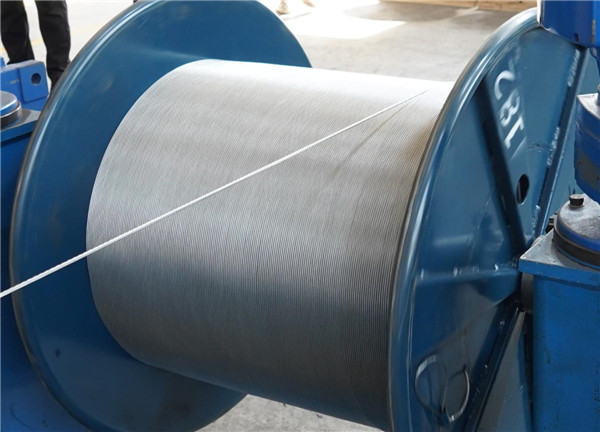Preserving the Backbone of Telecommunications: Best Practices for Storing Galvanized Steel Strands for Optical Fiber Cables. Galvanized steel strands are essential components of optical fiber cables, and their durability and reliability are critical to the performance of telecommunications infrastructure. However, preserving these raw materials can be a challenge, particularly when it comes to protecting them from the elements and other environmental factors that can cause damage and degradation over time. Here are some best practices for preserving galvanized steel strands for optical fiber cables.

Preserving the Backbone of Telecommunications: Best Practices for Storing Galvanized Steel Strands for Optical Fiber Cables
Store in a dry, climate-controlled environment: Moisture is one of the most significant threats to galvanized steel strands, as it can cause rust and corrosion. To protect your raw materials, store them in a dry, climate-controlled environment. Avoid storing them in areas that are subject to high humidity or temperature fluctuations.
Use proper storage equipment: Use appropriate storage equipment, such as pallet racks or shelves, to keep galvanized steel strands for optical fiber cables organized and off the ground. Make sure that the storage equipment is sturdy and in good condition to avoid accidents that could damage the raw materials.
Keep the storage area clean and organized: A clean and organized storage area is essential for preventing damage to galvanized steel strands for optical fiber cables. Regularly sweep the floor and remove any debris or dust that may accumulate. Keep the raw materials properly labeled and stored in an orderly fashion to make them easily accessible when needed.
Inspect regularly: Regular inspection of galvanized steel strands is critical to detecting any signs of damage or degradation. Inspect the raw materials for rust, corrosion, or other signs of damage. If any problems are detected, take immediate action to repair or replace the affected materials.
Implement a first-in, first-out (FIFO) inventory system: To prevent the raw materials from sitting in storage for extended periods, implement a first-in, first-out (FIFO) inventory system. This system ensures that the oldest materials are used first, reducing the risk of damage or deterioration due to prolonged storage.
By following these best practices, you can ensure that your galvanized steel strands for optical fiber cables are preserved for the maximum period of time, maintaining their durability and reliability for use in telecommunications infrastructure.
Related Guides
2020 china new design phosphatized steel wire for optical fiber cable reinforcement titanium dioxide for general purpose one world 3 product
2020 china new design phosphatized steel wire for optical fiber cable reinforcement heat shrinkable cable end cap one world 2 product
Post time: Apr-19-2023

